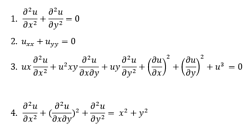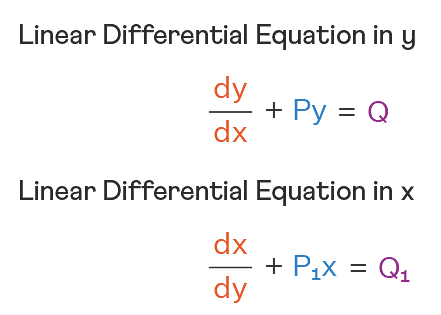An α particle and a proton are accelerated from rest through the same potential difference. The ratio of linear momenta acquired by above two particles will be:
- √2:1
- 2√2:1
- 4√2:1
- 8:1
The Correct Option is B
Approach Solution - 1
To solve this problem, we need to determine the ratio of the linear momenta acquired by an α particle and a proton when both are accelerated from rest through the same potential difference. Let's break down the steps:
Step-by-step Solution:
- When a charged particle is accelerated through a potential difference \( V \), the work done on the particle is converted into kinetic energy. The kinetic energy \( K \) gained by the particle is given by: \(K = qV\), where \( q \) is the charge of the particle.
- The expression for kinetic energy is also given by: \(K = \frac{1}{2}mv^2\), where \( m \) is the mass and \( v \) is the velocity of the particle.
- From the above two equations, we get: \(qV = \frac{1}{2}mv^2 \Rightarrow v = \sqrt{\frac{2qV}{m}}\)
- The linear momentum \( p \) of the particle is: \(p = mv = m\sqrt{\frac{2qV}{m}} = \sqrt{2mqV}\)
- Now, compute the momenta for both the α particle and the proton:
- For the α particle (He\(^{2+}\)), the charge \( q \) is 2e, and the mass \( m \) is approximately 4 times that of the proton. Therefore, the momentum for the α particle is: \(p_{\alpha} = \sqrt{2 \cdot 4m_p \cdot 2e \cdot V} = \sqrt{16m_peV}\)
- For the proton, the charge \( q \) is e and the mass \( m \) is \( m_p \). Therefore, the momentum for the proton is: \(p_p = \sqrt{2m_peV}\)
- Ratio of the linear momenta of α particle to proton: \(\frac{p_{\alpha}}{p_p} = \frac{\sqrt{16m_peV}}{\sqrt{2m_peV}} = \frac{\sqrt{16}}{\sqrt{2}} = \frac{4}{\sqrt{2}} = 2\sqrt{2}\)
Therefore, the ratio of linear momenta acquired by the α particle and the proton is 2√2:1.
Approach Solution -2
The ratio of linear momenta acquired by above two particles,
\(\frac{pα}{pp}=\frac{\sqrt{2(4m)(2eV)}}{{\sqrt{2(m)(eV)}}}\)
\(=\frac{\sqrt{16}}{√2}\)
=\(\frac{4}{√2}\)
\(=\frac{2√2}{1}\)
So, the correct option is (B): \(\frac{2√2}{1}\)
Top Questions on centripetal acceleration
- A body of mass 0.2 kg is attached to a light string of length 1 m and revolved in a vertical circle. What is the minimum speed at the lowest point so that the body can complete the circular motion? (Take \( g = 10 \, \text{m/s}^2 \))
- MHT CET - 2025
- Physics
- centripetal acceleration
- A particle is moving in a circle of radius 2 m with a constant speed of 4 m/s. What is the centripetal acceleration?
- MHT CET - 2025
- Physics
- centripetal acceleration
- A particle is moving with a constant velocity of 5 m/s in a circular path of radius 2 m. What is the centripetal acceleration of the particle?
- MHT CET - 2025
- Physics
- centripetal acceleration
- A body moves in a circle of radius \( r = 5 \, \text{m} \) with a constant speed of \( v = 10 \, \text{m/s} \). What is the centripetal acceleration of the body?
- MHT CET - 2025
- Physics
- centripetal acceleration
- A block is tied to a string of length 98 cm and is rotated in a horizontal circle. Find the angular velocity if the centripetal acceleration \( a = g \).
- KEAM - 2025
- Physics
- centripetal acceleration
Questions Asked in JEE Main exam
Given below are two statements:
Statement (I):
 are isomeric compounds.
are isomeric compounds.
Statement (II): are functional group isomers.
are functional group isomers.
In the light of the above statements, choose the correct answer from the options given below:- JEE Main - 2025
- Isomerism
- A capillary tube of radius 0.1 mm is partly dipped in water (surface tension 70 dyn/cm and glass water contact angle $ \approx 0^\circ $) with $ 30^\circ $ inclined with vertical. The length of water risen in the capillary is ____ cm. (Take $ g = 9.8 $ m/s$^2 $)
- JEE Main - 2025
- Surface Tension
If the domain of the function \( f(x) = \frac{1}{\sqrt{3x + 10 - x^2}} + \frac{1}{\sqrt{x + |x|}} \) is \( (a, b) \), then \( (1 + a)^2 + b^2 \) is equal to:
- JEE Main - 2025
- Functions
A point particle of charge \( Q \) is located at \( P \) along the axis of an electric dipole 1 at a distance \( r \) as shown in the figure. The point \( P \) is also on the equatorial plane of a second electric dipole 2 at a distance \( r \). The dipoles are made of opposite charge \( q \) separated by a distance \( 2a \). For the charge particle at \( P \) not to experience any net force, which of the following correctly describes the situation?

- JEE Main - 2025
- Electrostatics and Work Done by Electric Field
Given below are two statements: one is labelled as Assertion (A) and the other is labelled as Reason (R).
Assertion (A): Choke coil is simply a coil having a large inductance but a small resistance. Choke coils are used with fluorescent mercury-tube fittings. If household electric power is directly connected to a mercury tube, the tube will be damaged.
Reason (R): By using the choke coil, the voltage across the tube is reduced by a factor \( \frac{R}{\sqrt{R^2 + \omega^2 L^2}} \), where \( \omega \) is the frequency of the supply across resistor \( R \) and inductor \( L \). If the choke coil were not used, the voltage across the resistor would be the same as the applied voltage.
In light of the above statements, choose the most appropriate answer from the options given below:- JEE Main - 2025
- electrostatic potential and capacitance
Concepts Used:
Types of Differential Equations
There are various types of Differential Equation, such as:
Ordinary Differential Equations:
Ordinary Differential Equations is an equation that indicates the relation of having one independent variable x, and one dependent variable y, along with some of its other derivatives.
\(F(\frac{dy}{dt},y,t) = 0\)
Partial Differential Equations:
A partial differential equation is a type, in which the equation carries many unknown variables with their partial derivatives.

Linear Differential Equations:
It is the linear polynomial equation in which derivatives of different variables exist. Linear Partial Differential Equation derivatives are partial and function is dependent on the variable.

Homogeneous Differential Equations:
When the degree of f(x,y) and g(x,y) is the same, it is known to be a homogeneous differential equation.
\(\frac{dy}{dx} = \frac{a_1x + b_1y + c_1}{a_2x + b_2y + c_2}\)
Read More: Differential Equations